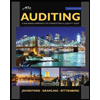INTRODUCTION Bryce Commings was assistant controller for Waterton Company, and his responsibilities included bank relations, accounts receivable collection, and cash management. From his business readings he was aware that many wall street economists were forecasting a recession for late 2019 into middle 2020. He remembered that in the last recession Waterton was criticized for weakened liquidity as shown on its balance sheet. He ran a simulation with improved accounts receivable and inventory turnovers, Bryce was disappointed with the overall liquidity picture. He was concerned that he was missing something. Maybe he did not understand the relationships among the liquidity measures or maybe he had an error in his worksheet or maybe financial relationships had changed in the past ten years. He assumed if cash came in faster with better collections and more efficient inventory control, liquidity metrics would improve. The eight conventional liquidity measures were current ratio, acid test ratio, account receivable turnover, days in receivables, inventory turnover, days in inventory, conversion period, and working capital to sales. Bryce ran simulations on various scenarios for the depth of a future recession. Waterton was a manufacturing firm so it had accounts receivable, and three levels of inventory: raw material, work in process, and finished goods. It would be difficult to enforce a shorter credit period given the credit terms in the industry. The firm had to do a better job screening the initial credit application to weed out weak customers, and then the firm had to vigorously pursue late payers. Bryce considered hiring an entry level accountant to work primarily on improving the collection of receivables, along with purchasing more efficient credit software. Bryce hoped to increase the receivable turnover by 10%. Bryce was hoping to work with production engineers to increase inventory turns by 10%, achieved with improved inventory software and stronger supply chain relationships. Questions: If cash flow increases during the year from the proposed changes in accounts receivable and inventory accounts, discuss the best use of the increased cash flow: pay down the accounts payable, increase dividends, or purchase company stock, or pay off a portion of the long-term loan. Show all calculations. Given the proposed improvements in Waterton’s liquidity position, what is the best way for Bryce to communicate this improvement: by the conventional liquidity metrics, impact on the cash flow statement, or financial benefits from the deployment of the increased cash flow. Exhibit 1 Waterton’s Key Financial Data December 31, 2017 (000) Current Assets Sales $3,770 Cash & equivalents 200 cost of sales 1,885 Accounts receivable 580 Inventory 269 net income 376 Prepaids 70 1,119 cash flow operations 475 Current Liabilities Income taxes payable 100 Long term debt, 6% rate 500 Accounts payable 600 Accrued expenses 100 800
INTRODUCTION
Bryce Commings was assistant controller for Waterton Company, and his responsibilities included bank relations,
He ran a simulation with improved accounts receivable and inventory turnovers, Bryce was disappointed with the overall liquidity picture. He was concerned that he was missing something. Maybe he did not understand the relationships among the liquidity measures or maybe he had an error in his worksheet or maybe financial relationships had changed in the past ten years. He assumed if cash came in faster with better collections and more efficient inventory control, liquidity metrics would improve. The eight conventional liquidity measures were
Bryce ran simulations on various scenarios for the depth of a future recession. Waterton was a manufacturing firm so it had accounts receivable, and three levels of inventory: raw material, work in process, and finished goods. It would be difficult to enforce a shorter credit period given the credit terms in the industry. The firm had to do a better job screening the initial credit application to weed out weak customers, and then the firm had to vigorously pursue late payers.
Bryce considered hiring an entry level accountant to work primarily on improving the collection of receivables, along with purchasing more efficient credit software. Bryce hoped to increase the receivable turnover by 10%. Bryce was hoping to work with production engineers to increase inventory turns by 10%, achieved with improved inventory software and stronger supply chain relationships.
Questions:
- If
cash flow increases during the year from the proposed changes in accounts receivable and inventory accounts, discuss the best use of the increased cash flow: pay down the accounts payable, increase dividends, or purchase company stock, or pay off a portion of the long-term loan. Show all calculations. - Given the proposed improvements in Waterton’s liquidity position, what is the best way for Bryce to communicate this improvement: by the conventional liquidity metrics, impact on the cash flow statement, or financial benefits from the deployment of the increased cash flow.
Exhibit 1 Waterton’s Key Financial Data December 31, 2017 (000)
Current Assets Sales $3,770
Cash & equivalents 200 cost of sales 1,885
Accounts receivable 580
Inventory 269 net income 376
Prepaids 70
1,119 cash flow operations 475
Current Liabilities
Income taxes payable 100 Long term debt, 6% rate 500
Accounts payable 600
Accrued expenses 100
800
Trending now
This is a popular solution!
Step by step
Solved in 4 steps with 2 images









